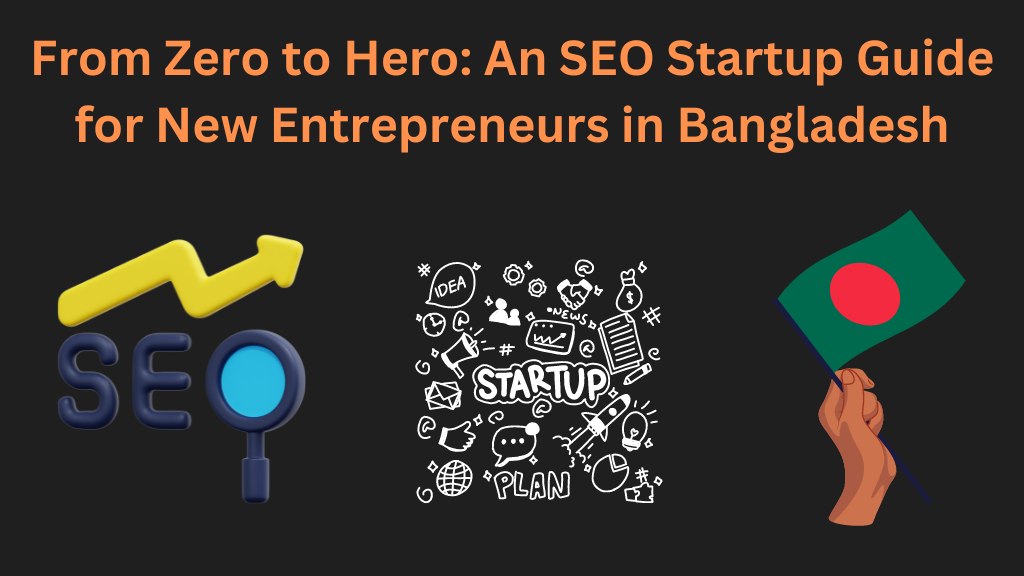Boost food blog visibility with SEO tactics and social media marketing tricks effectively. Implement targeted keyword strategies and share content on social media platforms to drive traffic and engagement.
In today’s digital landscape, where food blogging has become increasingly competitive, maximizing visibility and engagement is crucial for success. By strategically utilizing SEO tactics and social media marketing tricks, food bloggers can enhance their online presence, attract a larger audience, and ultimately boost their impact and influence in the industry.

Keyword research, engaging blog post titles, and the strategic use of imagery and videos can all contribute to a blog’s SEO performance while leveraging social media platforms to promote content and interact with followers can further amplify reach and engagement. By implementing these strategies effectively, food bloggers can position themselves for long-term success and growth in the competitive digital space.
Table of Contents
ToggleUnderstanding Seo For Food Blogs
SEO, or search engine optimization, is crucial for food bloggers who want to increase their visibility and reach a wider audience. It involves optimizing your blog and its content to improve its ranking on search engine results pages. The higher your blog ranks, the more likely it is to be seen by potential readers.
Optimizing your food blog for SEO has several benefits. Firstly, it can drive more organic traffic to your site, as it increases your chances of appearing in relevant search queries. This can lead to more views, engagement, and potentially higher revenue if you monetize your blog.
SEO works by making your blog more accessible to search engines. This involves using relevant keywords throughout your content, optimizing your page titles and meta descriptions, and improving the overall user experience on your site. Additionally, social media marketing can further boost your SEO efforts by driving traffic to your blog and increasing the number of backlinks to your content.
Essential SEO Tactics For Food Blogs
Think of SEO as the secret ingredient that makes your food blog stand out in search engine results. By implementing these strategies, you’ll be telling search engines like Google exactly what your blog is about, making it easier for users to discover your culinary creations.
1. Keyword Research: Choosing the Right Spices
Just like selecting the perfect blend of spices for your dish, choosing the right keywords is crucial for SEO success. These are the words and phrases people use to search for information online. Here’s how to find the perfect “keywords”:
- Start with broad topics: What kind of food content do you create? Is it healthy meals, ethnic cuisine, baking tutorials, or something else entirely?
- Use keyword research tools: Free tools like Google Keyword Planner or paid options like Ahrefs and SEMrush can offer valuable insights into search volume, competition, and related keyword suggestions.
- Target a mix of high-volume and long-tail keywords: High-volume keywords attract a larger audience, but they’re also more competitive. Long-tail keywords are more specific and have lower competition, making them easier to rank for.
2. Content is King (and Queen): Deliciously Optimized Posts
Once you have your keywords, it’s time to create content that is both informative and search engine-friendly. Here’s what you need to keep in mind:
- Craft compelling titles and meta descriptions: These are the first things users see in search results, so make them enticing and relevant to your keyword. Titles should be concise and descriptive, while meta descriptions should provide a brief overview of your content and encourage users to click.
- Integrate keywords naturally: Don’t stuff your content with keywords, as this can hurt your ranking and make for a poor reading experience. Instead, aim to use them organically throughout your text, including titles, headings, and body paragraphs.
- Optimize images: Include alt tags (descriptive text) for your images that incorporate your target keyword. This helps search engines understand what your images are about and improves accessibility for visually impaired readers.
3. Building Backlinks: The Power of Recommendations
Imagine your blog as a restaurant. Backlinks are like positive reviews from other well-established websites in the food blogging world. The more high-quality backlinks you have, the more “trustworthy” your blog appears to search engines, potentially boosting your ranking.
- Guest blogging: Reach out to other food bloggers and offer to write guest posts on their websites. In return, you can include a backlink to your own blog in your author bio.
- Get featured in online publications: Look for opportunities to have your recipes or blog posts featured on relevant websites or online magazines. This is a great way to gain exposure and build backlinks.
- Engage in online communities: Participate in forums, social media groups, and online discussions related to food. Share your expertise and offer valuable insights, but avoid excessive self-promotion.
Leveraging Social Media Marketing For Food Blogs
SEO is like a slow cooker, working its magic gradually. But social media is your instant pot, allowing you to connect with your audience in real time and generate immediate buzz. Let’s explore some sizzling social media strategies:
1. Choose Your Platforms Wisely:
Every social media platform has its own unique audience and culture. Identify the platforms where your target audience is most active, whether it’s Instagram for visually appealing content, Pinterest for recipe inspiration, or Facebook for building communities.
2. Post Consistently:
Regularly posting fresh content keeps your audience engaged and coming back for more. Aim for a consistent posting schedule, but avoid overwhelming your followers with too much content.
3. Engage with Your Audience:
Social media is a two-way street. Respond to comments, answer questions, participate in conversations, and run contests or giveaways to encourage interaction. Building relationships with your audience fosters loyalty and helps you establish yourself as a trusted source of information.
4. Utilize Visual Content:
People are drawn to visually appealing content, so make sure your social media posts are visually stunning. Use high-quality photos and videos of your dishes, and experiment with creative formats like stories, reels, or short food videos.
5. Leverage Hashtags:
Hashtags are like keywords for social media. Use hashtags like labels to categorize your food blog content. Research popular and niche hashtags, aiming for 5-10 per post. Create your own branded hashtag to build recognition. Avoid overuse and track performance to optimize your hashtag strategy. This can help attract a wider audience interested in your culinary creations.
6. Collaborate with Other Food Bloggers:
Partnering with other food bloggers can help you reach new audiences and expand your network. You can do this through guest blogging, co-hosting social media challenges, or even creating joint recipe collaborations.
7. Paid Advertising:
While organic reach is crucial, consider exploring paid advertising options on social media platforms like Facebook, Instagram, or Pinterest. This allows you to target your ideal audience with laser precision and drive them to your blog content.
Pro Tip: Track your analytics! Regularly analyze your website traffic and social media engagement to see what’s working and what’s not. Use this data to refine your strategies and optimize your content for maximum impact.

Credit: blog.hubspot.com
Advanced Tips And Tricks For Food Bloggers
Updating Old Blog Posts for SEO: Refresh old content with new keywords and relevant information to improve search visibility. Updating old posts also shows search engines that your content is current and valuable.
Using Suggested Keywords to Discover New Content Ideas: Use keyword suggestion tools to find new and relevant content ideas for your food blog. Incorporating these suggested keywords in your posts can attract more organic traffic.
Optimizing Infographics, Podcasts, and Videos for SEO: Enhance the SEO of your visual and audio content by adding descriptive titles, alt text, and relevant keywords. This can improve the visibility of your multimedia content in search results.
Effective SEO Strategies for Food Businesses: Implement industry-specific SEO strategies such as recipe clusters, long-tail keywords, and optimizing images to enhance the online visibility of your food business.
Measuring SEO Success and Making Data-driven Decisions: Utilize tools like Google Search Console and Google Analytics to measure the performance of your SEO efforts. Analyzing data helps in making informed decisions to improve your food blog’s visibility.
Embrace storytelling: Share personal anecdotes, experiences, and the inspiration behind your recipes to connect with your audience on a deeper level.
Experiment with different content formats: Don’t just stick to static blog posts. Explore video recipes, food photography tutorials, or even live cooking sessions to keep your content fresh and engaging.
Stay up-to-date with food trends: Keep an eye on what’s buzzing in the culinary world and incorporate trendy ingredients, dishes, or techniques into your content to stay relevant.
Be patient and persistent: Building a successful food blog takes time, dedication, and consistent effort. Don’t get discouraged if you don’t see results overnight. Keep creating high-quality content, engaging with your audience, and refining your strategies for long-term success.
Bonus Tip: Consider investing in a professional food photography workshop or online course to elevate the visual appeal of your blog and social media content. Stunning visuals are a powerful tool for grabbing attention and making your mouth water!
Remember, the key to a thriving food blog is to be passionate, creative, and consistent. By combining these SEO and social media marketing tips with your love for food and storytelling, you’ll be well on your way to spicing up your blog’s visibility and attracting a devoted audience of hungry readers.
Conclusion
Incorporating effective SEO tactics and leveraging the power of social media can significantly boost the visibility of your food blog. By implementing keyword research, strategic content creation, and maximizing the use of social media, you can enhance your blog’s reach and engagement. These strategies can ultimately lead to increased traffic and broader audience appeal, resulting in a more successful food blog.





